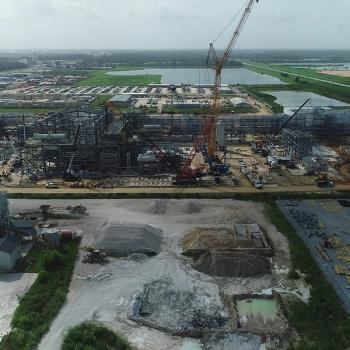
LNG Won’t Solve World’s Energy Shortage
A perspective on current LNG supply issues
LNG around the globe is in high demand. Prices have soared and shipments are being diverted to the highest bidder. But the industry is facing difficulties related to unprecedented demand, problems at LNG export terminals, and overall supply constraints. What has become clear is that LNG is not the answer to the world’s energy problems. Nations can’t rely on it being available or affordable. They will need to find other energy sources to provide their populations with a reliable supply.
In February, Shell released its 2022 LNG Outlook, giving a summation for the previous year and a projection for the future. It spoke of rising LNG demand in 2021, and subsequent price volatility. Gas and oil prices have hit record levels over the last year. The outbreak of war in Ukraine, compounded by recovery from a global pandemic are two primary contributing factors.
Russia follows the US as the global supplier of natural gas. According to the BP Statistical Review of World Energy, the top five pipeline consumers of Russian LNG are Germany, Italy, Belarus, Turkey, and the Netherlands. Russian natural gas imports made up nearly 40% of EU consumption last year, sanctions have complicated that relationship.
The US LNG industry has been a major beneficiary of the growing need for LNG in Europe. But with export terminals operating at or near full capacity, problems were inevitable. A few weeks ago, for example, the Freeport LNG terminal in Texas exploded. Supply was disrupted for three weeks. The result was a 10% reduction in the total natural gas imports in Europe. Since roughly 40% of European gas imports ended abruptly this year due to sanctions, global importers are tightening their belts. Another incident occurred at Shell’s Prelude floating facility in Australia. The workers sought better pay, which led to two weeks of downtime.
One proposition made by US Secretary of Energy Jennifer Granholm is to simply ramp up production. That’s easy for a country like the US, that leads the world in natural gas exports, but not for others. Other options are to delve more into combined cycle gas turbine technology, renewables, and hydrogen blends. Finland, for example, recently announced plans to develop a national hydrogen pipeline network.
The current problems present in the global LNG supply chain are significant. Prices will remain high while parties in Asia and Europe fight over limited shipments. Diversification of energy portfolio’s is required to ease strain on supply lines.
This highlights fundamental issues with LNG as an energy resource. While the surge in imports has been required due to the war, it still meanders around the main problem that LNG is trying to solve. LNG’s success ultimately relies on the premise that local and regional energy production is lacking. In other words, many places where energy production is unable to meet demand have turned to LNG.
More investment into locally sourced energy is key to avoiding these troubles. Otherwise, LNG supply can dry up rapidly due to problems with export terminals, lack of ships to carry the LNG, political considerations, or regional conflicts.
Bottom line: LNG can and should be used to supplement energy shortfalls around the globe, but is no replacement for secure and reliable domestic energy.
Newsletter
Power your knowledge with the latest in turbine technology, engineering advances, and energy solutions—subscribe to Turbomachinery International today.




